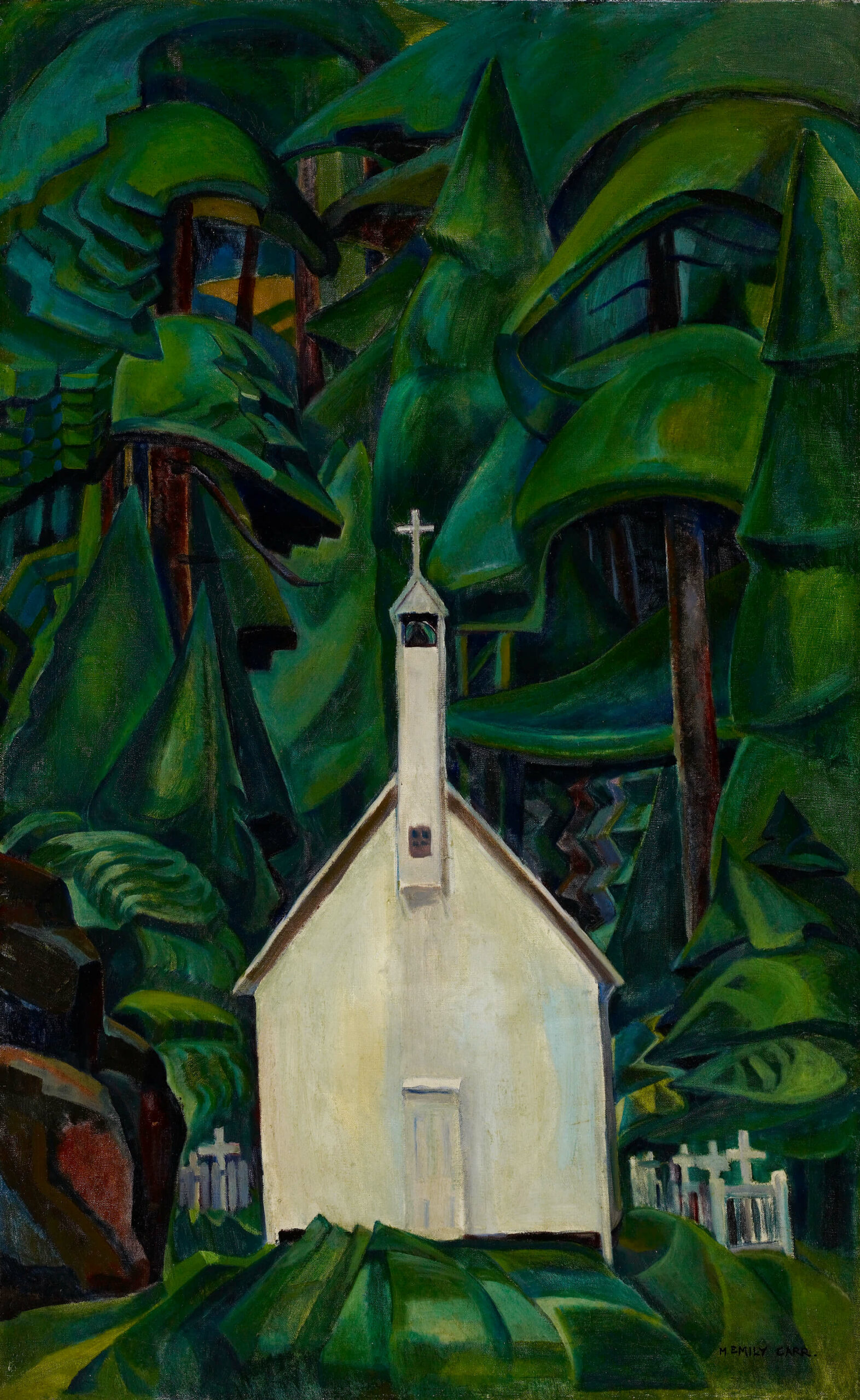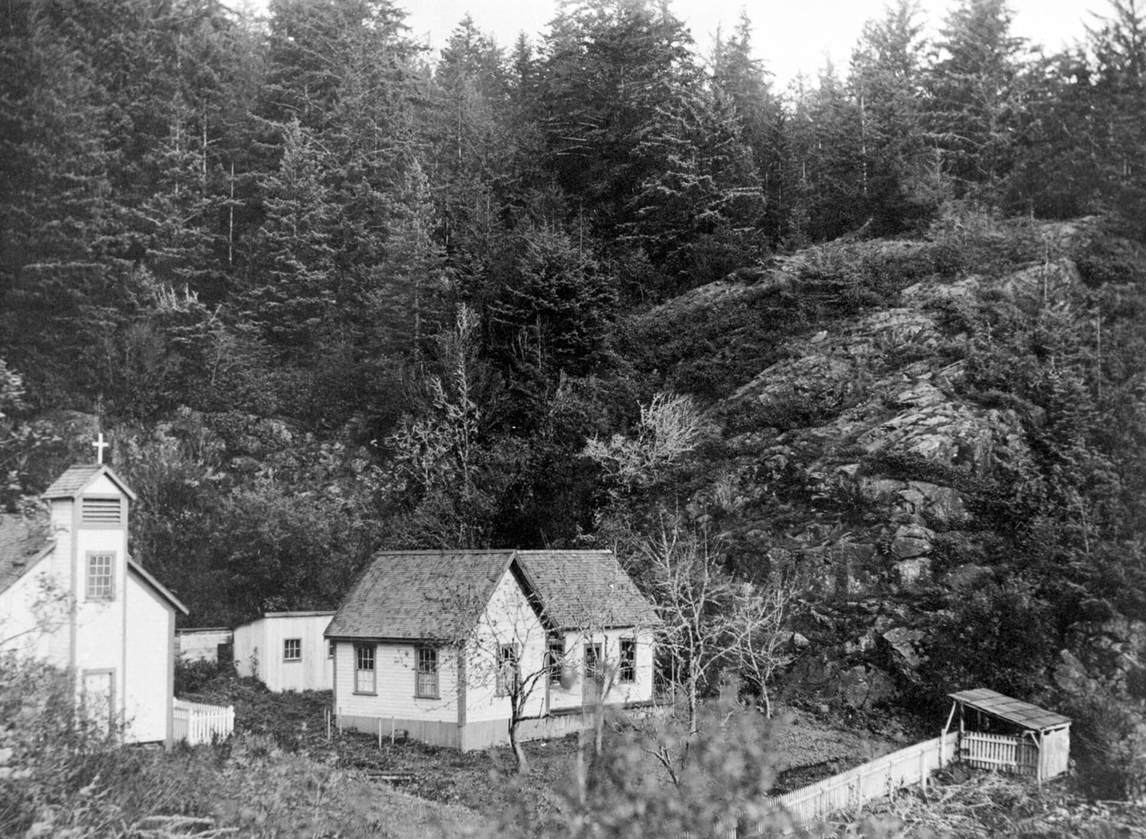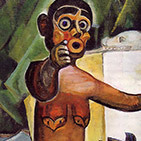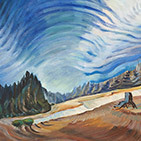Church in Yuquot Village 1929

Emily Carr, Church in Yuquot Village, 1929
Oil on canvas, 108.6 x 68.9 cm
Art Gallery of Ontario, Toronto
In Church in Yuquot Village, one of Carr’s most important works, a dense wall of forest engulfs the church, which Carr depicts in vivid white, a stark contrast to the dark forest. Against this backdrop the church is miniaturized, signifying both the incursion and the vulnerability of the new beliefs introduced by the settler population. The small church, built by the local Nuu-chah-nulth tribe of the Yuquot community, symbolized for Carr the their hybrid assimilation of Christianity, which she regarded as a sympathetic version of a faith she shared. In a manner reminiscent of time-lapse photography, the small cross at the apex of the church steeple seems to fall to earth, multiplying into a cluster of crosses marking the graves of the dead. These crosses suggest a gathering of the faithful and at the same time stand in testament to the church’s failed mission. The building’s windowless walls and reduced features create another “marker,” suggesting a structure that is both monolithic and uninhabitable. Carr’s rendering reveals the mission’s loneliness and impossibility—the tree boughs lean down heavily and sweep up forcefully from the bottom of the picture, as if to show the implausibility of a meeting place between two vastly different spiritual forces.

In 1929 Carr travelled by steamer up the west coast of Vancouver Island. She spent time in the Mowachaht village of Yuquot, where she sketched the small Catholic church pictured here. A painting of a church represents a philosophical departure for Carr: during her earlier trips, she had taken no interest in the mission churches that had been built in the villages in the region, choosing instead to focus on Indigenous forms of spiritual expression.
Church in Yuquot Village was included in the National Gallery of Canada’s Fifth Annual Exhibition of Canadian Art in 1930. Lawren Harris (1885–1970) bought the painting and hung it in his house, declaring it to be her best work. In 1938 Church in Yuquot Village was selected for A Century of Canadian Art at the Tate Gallery, London, an exhibition that Vincent Massey called “a most representative showing of Canadian painting and sculpture, including all schools and all periods.”
The painting’s original title—as named by Carr—was Indian Church. In 2018, after consultation with Nuu-chah-nulth First Nations on whose territory the church was located, the Art Gallery of Ontario renamed the painting to Church in Yuquot Village, using the specificity of its location within the title. Yuquot, whose name is translated to “Where the Winds Blow from Many Directions,” was a summer village for the thriving whaling community before colonial contact and continues now as a small community at its original location on Nootka Island, off the coast of Vancouver Island in Nootka Sound. It is also where, in 1778, James Cook first made landfall. Carr saw the church during her 1928 travels through the territory, where it had been built on Mowachaht Muchalaht territory by Roman Catholic missionaries in 1889. The title change is controversial: some are concerned that such practices constitute an act of “whitewashing,” while others see such attempts as an effort of respectful, collaborative renaming seeking to redress the painful history of colonization. The original church in Yuquot that Carr painted later burned down, and a new one was built at the site, which still stands and is used as a community centre.

 About the Author
About the Author
 More Online Art Books
More Online Art Books
 Acknowledgements
Acknowledgements